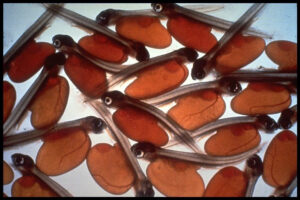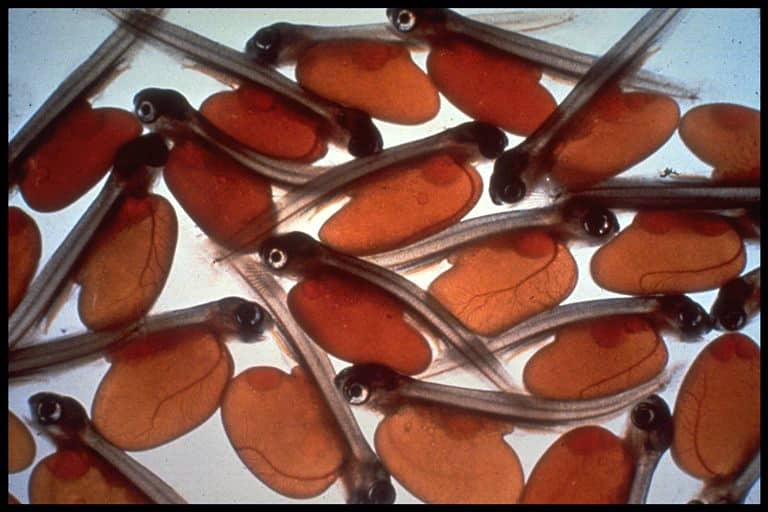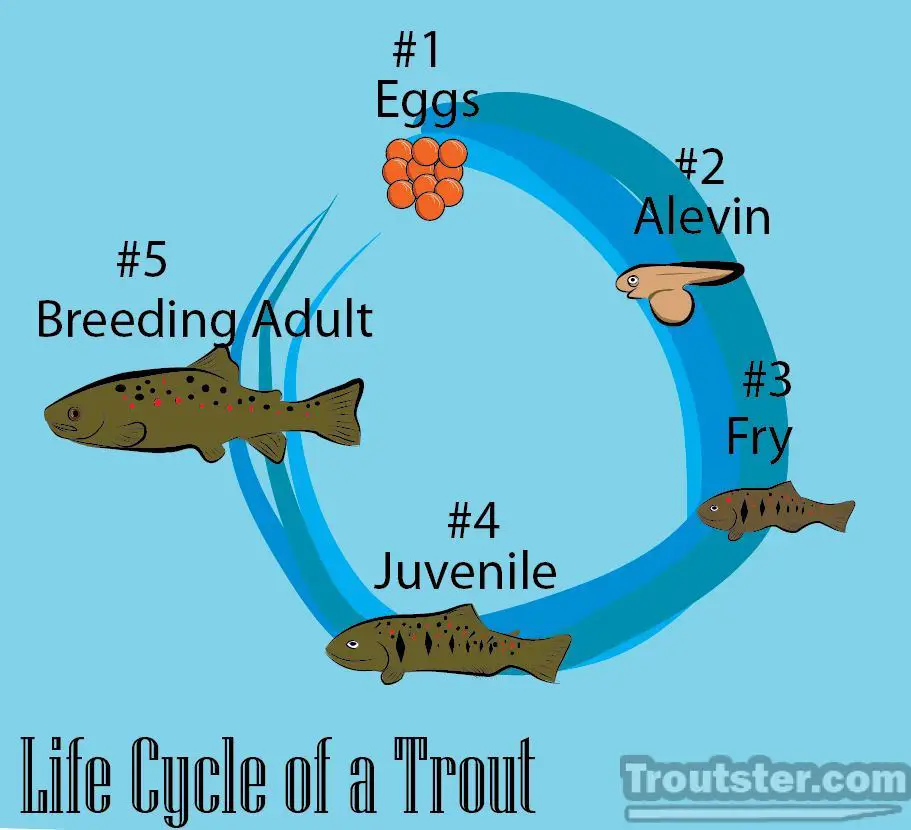This post was last updated on September 1st, 2021 at 07:18 pm
The trout life cycle consists of eggs, Alevin, fry, juvenile trout then adult/breeding trout.
Trout Life Cycle
The Trout life cycle is fairly simple. I will break it down to the various parts here and explain a little about each cycle.
The Eggs
These eggs are laid in a gravelly and fairly swift area of a stream. The brook and brown trout will spawn in the fall, while the rainbow and various cutthroat species will breed in the spring.
The Alevin

This is a newly spawned salmon or trout still carrying the yolk sac. They derive nutrients from this yolk until they are large enough to begin eating normal food. The consumption of the yolk will usually take two to three weeks.
Fry
As soon as the yolk sac has been absorbed by the trout, the next life cycle is called “fry”. At this stage the fish will begin eating small insects and larvae. They look very similar to adult trout but have light coloration and non distinct spots. They are often difficult to determine the species when small.
Fingerlings (Juvenile Trout)
These are simply one step larger than fry. They are starting to get more defined coloration and are beginning to look more like the adults. Often called “fingerlings” because they are about the size of a small finger.
Adults
The adults are the mature broodstock or breeding stock. The mature fish we all want to catch. You can learn more about the breeding habits and process here.
The time frame or the full trout lifespan can vary with the species and habitat and conditions.


